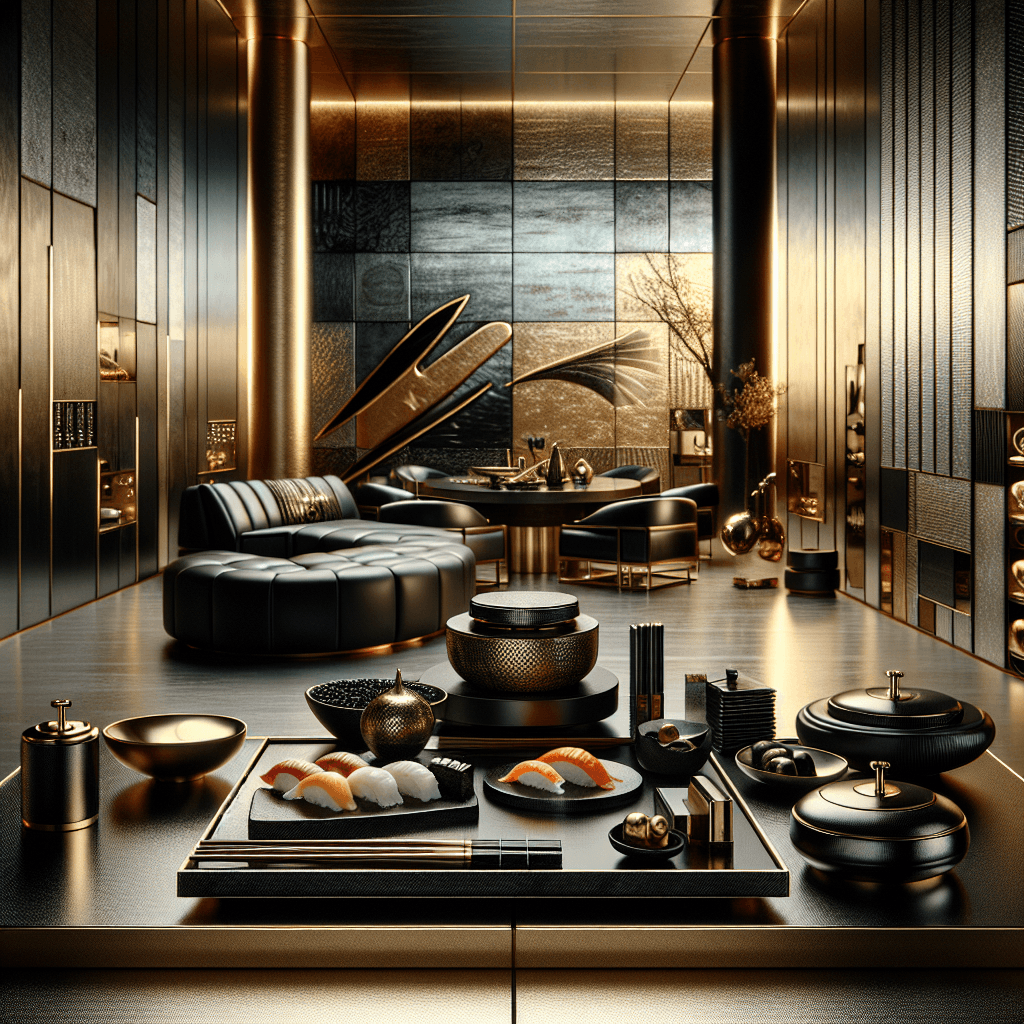Why This Omakase-Only Restaurant Is the Most Exclusive in America
Stepping into Masa New York is not just about dining; it’s an entry into the realm of high culinary art, where every detail is a testament to unmatched craftsmanship and tradition.
- The Art of Omakase: A Culinary Philosophy
- Chef Masa: The Visionary Behind the Counter
- The Masa Experience: Beyond Dining
- Exquisite Ingredients and Masterful Techniques
- Cultural Significance and Artistic Merit
- Final Reflections on Masa’s Culinary Excellence
The Art of Omakase: A Culinary Philosophy
Omakase, a Japanese term meaning “I leave it up to you,” is not merely a menu but a philosophy that stands at the core of Masa, America’s most exclusive sushi restaurant. Located in the heart of Manhattan, Masa is a sanctuary where Chef Masayoshi Takayama, or Chef Masa, as he is affectionately known, orchestrates a dining experience akin to a symphony.
At Masa, the omakase experience transcends the conventional dining format, inviting guests into a journey curated by Chef Masa’s decades of expertise and his deep respect for Japanese culinary traditions. Each course is thoughtfully designed to showcase the natural flavors and textures of the finest ingredients available, many of which are flown in from Japan.
- Seasonality: Embracing the Japanese tradition of shun, Masa’s menu is ever-changing, reflecting the peak seasonality of ingredients.
- Exclusivity: With only 26 seats in the restaurant, each session is an intimate gathering, making reservations a coveted achievement.
- Interaction: The layout of the restaurant promotes a direct interaction with Chef Masa, offering insights into the philosophy behind each dish.
Chef Masa: The Visionary Behind the Counter
Chef Masayoshi Takayama, the founder and heart of Masa, brings with him a rich lineage of culinary mastery from Tochigi, Japan. His early exposure to his family’s fish market laid the foundation for his deep appreciation of fresh seafood, a hallmark of his culinary style. Moving to the United States in the 1980s, Chef Masa continued to hone his craft, eventually opening Masa in 2004, which quickly set new standards for sushi in America.
His approach is deeply rooted in the Zen philosophy of ichi-go ichi-e, a concept that emphasizes the uniqueness of each moment and encounter. This philosophy is palpable in the serene ambiance of Masa, where each meal is an ephemeral artwork, never to be replicated in exact form again.
- Handcrafted Tools: Chef Masa insists on using traditional Japanese tools, some of which are custom-made for the restaurant.
- Attention to Detail: Every element, from the hand-shaved ice for sashimi to the custom pottery for each dish, is meticulously chosen.
The Masa Experience: Beyond Dining
The experience at Masa is choreographed with the precision of a ballet. From the moment guests arrive, they are enveloped in an atmosphere of exclusivity and tranquility. The interior, designed by Chef Masa himself, features elements like a serene hinoki wood counter—soft to the touch and perfect for sushi preparation.
The dining experience is an intimate two-hour session where Chef Masa and his team perform culinary magic before your eyes. The absence of menus means each course is a surprise, tailored to the tastes and preferences of the diner, and presented with a narrative that enhances the sensory experience.
- Personalization: Chef Masa often adjusts dishes based on the diner’s reaction, making each experience truly personalized.
- Exclusivity: The high price point and the reservation policy reflect the exclusivity and demand for this unique culinary experience.
Exquisite Ingredients and Masterful Techniques
The ingredients used at Masa are a testament to Chef Masa’s relentless pursuit of perfection. From the rarest bluefin tuna to the freshest wasabi, each component is selected for its quality and seasonality. The rice, a critical element in sushi, is a special blend that Chef Masa has perfected over years, and is seasoned with a unique blend of vinegars.
Techniques are equally important, with traditional methods like aging certain types of fish to enhance their flavor, or the precise knife skills displayed in the preparation of each piece of sushi. These techniques have been refined to an art form at Masa, requiring years of training under Chef Masa’s guidance.
- Aging Process: Some fish are aged for specific periods to develop depth of flavor.
- Temperature Control: Sushi is served at body temperature, ensuring the perfect balance of rice texture and fish oils.
Cultural Significance and Artistic Merit
Masa is not just a restaurant; it is a cultural institution that bridges the gap between Japanese culinary traditions and the Western palate. It elevates sushi to an art form, respecting its origins while introducing a level of craftsmanship and exclusivity that is unparalleled.
The artistic merit of Masa lies in its ability to transform simple ingredients into a profound gastronomic experience. This is achieved through Chef Masa’s vision, which infuses each dish with a narrative that speaks to both the mind and the palate.
- Cultural Ambassador: Chef Masa is seen as an ambassador of Japanese culture, educating diners about the depth and nuances of traditional sushi.
- Artistic Presentation: Each dish is presented as a work of art, emphasizing aesthetics and technique.
Final Reflections on Masa’s Culinary Excellence
Masa New York stands as a pinnacle of sushi craftsmanship outside Japan. It offers more than just a meal; it provides an immersive experience that reflects the zenith of culinary artistry. The exclusivity, attention to detail, and dedication to tradition make Masa not only the most exclusive sushi restaurant in America but also a cultural landmark that continues to shape the culinary landscape.
For those fortunate enough to dine at Masa, the experience is unforgettable, marked by a journey through flavors, textures, and culinary history that is unmatched anywhere outside Japan. It is here that one truly understands the art of sushi through Chef Masa’s visionary lens.
For further exploration of Japanese culinary traditions and Chef Masa’s philosophy, consider reading authoritative sources such as Nippon.com.



